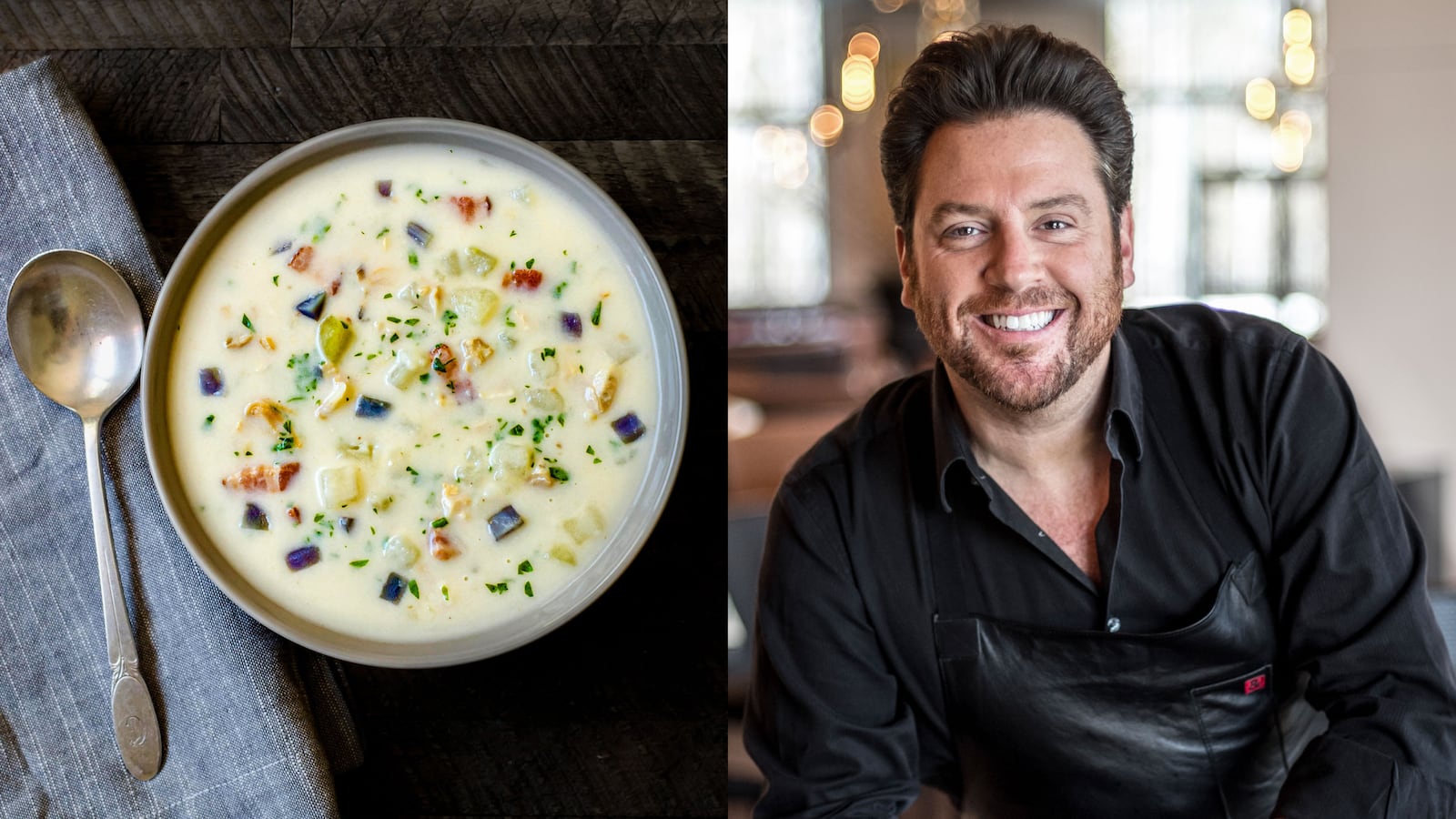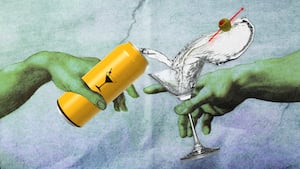Working as a line cook at the age of 15, one of the things Scott Conant learned how to make was clam chowder. His first restaurant job was at the now-shuttered Sea Loft in Waterbury, Connecticut, where the hearty New England dish was a staple on the menu.
“Simultaneously, I went to vocational school and that was one of the staple soups we needed to learn,” says Conant, now a two-time James Beard Award-winning chef, restaurateur and Food Network star. “And so that was kind of a formative soup for me because it was something that represented New England and it was also something that was really comforting, particularly around the cooler months.”
Despite now living in Scottsdale, Arizona, Conant says he wouldn’t turn down a bowl of classic chowder even when the temperature hits 100 degrees. Luckily, he has also come up with a few ingenious ways to modify this signature New England recipe into something a bit less rich. For one thing—clam chowder purists be warned—he omits dairy entirely.
“One of the challenges of clam chowder in general is all the dairy, so I wanted to lighten it up and utilize the potato puree as the textural profile,” says Conant. “This recipe is not as heavy, and, without sacrificing flavor, it meets all the hurdles of a chowder.”
His potato-based chowder (recipe below), is featured in his latest cookbook, Peace, Love, and Pasta)" href="https://urldefense.com/v3/__https:/www.amazon.com/Peace-Love-Pasta-Elegant-Recipes/dp/1419747363__;!!PIZeeW5wscynRQ!85tzvzVkrUcl7yS0o7DsVw5c1bM9EDA7_q-aiqYR7C7YuzE4BCkFPNnfbsB1cMYgTPo$">Peace, Love, and Pasta, which was released a few weeks ago. The book takes new approaches to many of the Italian and New England dishes he grew up eating. “I relooked at these recipes through the skill of cooking at home,” he says. “I think there’s something to be said about a book that is ambitious in flavor, but simple in execution.”

Here are a few of the chef’s tips and tricks for making his potato-based clam chowder at home.
“Chowder is about texture and that delicious, deep clam flavor,” says Conant. That texture can easily be achieved using pureed red potatoes rather than the traditional cream (though he does still include the option to include a cup of scalded cream if you prefer your chowder ultra-creamy). “The whole point is that it looks exactly like a chowder—you just sacrifice some of the dairy and lighten it up with a potato puree instead.”
The potatoes are also boiled in the water used to cook the clams, which helps to impart even more of the shellfish’s flavor into the chowder.
Conant’s primary goal for his chowder is to showcase the main ingredient: the clams. He uses fresh clams (manila or littleneck), being sure to reserve the cooking liquid to use later in cooking the potatoes and adjusting the chowder’s consistency.
“The old chef trick is to put a ladle in [the chowder], look at the back of the ladle, and how that coats the ladle is how it’s going to coat your palate,” he says. And to thin out the consistency, he prefers to use the more flavorful cooking water instead of just hot water.
Another important aspect of Conant’s chowder recipe is the applewood-smoked bacon, which creates a complex baseline. He cooks it just enough to render the fat and give it a little bit of color. “You get that little whisper of smoke on the back end of the palate, which I think is really important for chowder,” he says.
To give the chowder an even smokier flavor (or if you want to avoid using shellfish), Conant also likes making this chowder with smoked fish in place of clams.
Traditional New England clam chowder recipes often call for wine, but Conant skips it entirely, instead adding spices and extra celery and onions that he says add “a little backdrop of flavor” to the clams. In addition, Conant also adds diced purple Peruvian potatoes for color and texture.
“Keep it simple,” reminds Conant. “I try to add things that are going to enhance or add to the natural product. Those clam flavors are the flavors that I’m going for, so it’s really kind of doubling down on that with the celery seed and just a touch of crushed red pepper.”
Serves 8 to 10 (about 2 quarts)
INGREDIENTS
- .25 cup Applewood-smoked bacon, diced
- 1 Tbsp Celery seed
- 3 cups White or yellow onions, finely diced
- 1.5 cup Celery, finely diced
- 2 tsp Kosher salt, plus additional to taste
- Pinch crushed red pepper
- .25 cup Extra-virgin olive oil, plus more to finish, if desired
- 5 Live manila or littleneck clams, soaked in water with a little vinegar to remove sand
- 3 pounds Red potatoes, peeled, two-thirds roughly chopped and one-third cut into quarter-inch dice
- 1 pound Peruvian potatoes (or other purple potatoes), peeled and cut into quarter-inch dice
- 1 quart Canned clam juice or fish stock
- 1 cup Scalded cream (optional)
- .25 cup Fresh flat-leaf parsley, chopped
DIRECTIONS
- Add the bacon to a large heavy-bottomed pot over medium-low heat and render the fat for ten to 12 minutes, making sure that the bacon does not burn or take on too much color. Add the celery seed, onions, celery, salt and red pepper flakes to the bacon and sweat the vegetables for five to eight minutes, until the onions are translucent but have not yet taken on any color.
- While you are sweating the onions, in another large heavy-bottomed pot add the olive oil and the clams, cover, and cook on high heat until the clams start to open, about seven minutes. Once the clams are open (discard any that haven’t), remove the pot from the heat. Using tongs, remove the clams from the cooking water. Reserve the cooking liquid, allow it to settle for a few minutes, then decant it to remove the sand.
- When the clams are cool enough to handle, pick out the clam meat from the shells and discard the shells. Roughly chop the clam meat and reserve.
- Add the roughly chopped red potatoes to the pot with the clam liquid and cook them over medium heat until the potatoes are tender, eight to ten minutes. Allow to cool slightly, then carefully transfer the potatoes and some of the cooking water to a blender and purée until completely smooth, adding more liquid as needed to achieve a consistency that is neither gummy nor watery. (Do not fill the blender more than two-thirds of the way to the top, as the steam from the hot liquid can cause the top to pop off.) Alternatively, you can use an immersion blender and purée in the pot.
- Add the diced red and purple potatoes to the bacon and vegetables, then pour in the canned clam juice. Add the puréed potatoes, along with the chopped clams and the cup of cream (if using), and heat over medium-high until warmed through. Salt to taste. Add chopped parsley just before serving, and finish with extra-virgin olive oil, if desired.






